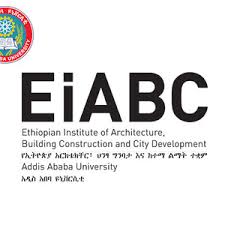| Sun | Mon | Tue | Wed | Thu | Fri | Sat |
|---|---|---|---|---|---|---|
| 1 | 2 | 3 | 4 | |||
| 5 | 6 | 7 | 8 | 9 | 10 | 11 |
| 12 | 13 | 14 | 15 | 16 | 17 | 18 |
| 19 | 20 | 21 | 22 | 23 | 24 | 25 |
| 26 | 27 | 28 |
Ethiopian Institute for Architecture, Building Construction and City Development (EiABC), Addis Ababa, Ethiopia
The Ethiopian Institute of Architecture, Building Construction and City Development (EiABC), was
founded in 1954 through a bilateral agreement between the Ethiopian and Swedish Governments as the
Ethio-Swedish Institute or simply the Building College. At the outset it aimed to offer a three-year
diploma program in Building Engineering. At the end of the 1957/58 academic year the training was
upgraded to a four-year program leading to a B.Sc. Degree in Building Engineering. In 1969, the Building
College and the College of Engineering merged to form the Faculty of Technology in 1969. This modality
served under Addis Ababa University from 1969 till 2009.
Getting its new name in 2010, EiABC is an autonomous institute of technology under Addis Ababa
University. EiABC is a home for architecture, urbanism and construction technology and management. It
educates prospective graduates, provides knowledge and services to the industry, and develops skills in
design, building technology, management, and planning. For more than half a century it was the sole
place in the country to offer programmes in architecture and building engineering.
Autonomy is applied in the fields of academic freedom, finance, and administration. EiABC is governed by
a Scientific and Managing Director while its highest decision making body is the Council, being controlled
by a Supervisory Board. EiABC offers teaching programs on Bachelor, Master and PhD levels, all related
to the built environment and designed in close consultation with the building industry in Ethiopia. It has
three bachelors', six masters' and two PhD programmes.
It has close to 3000 students and 231 academic and 225 administrative staff. There are 24 Chairs that
are the smallest and most empowered functional units in the academic structure of EiABC. They have full
academic autonomy and are led by their respective Chair Holders. The chair system forms the academic
nucleus of EiABC structure and are formed based on the various areas of specialization within a given core study area or discipline.

